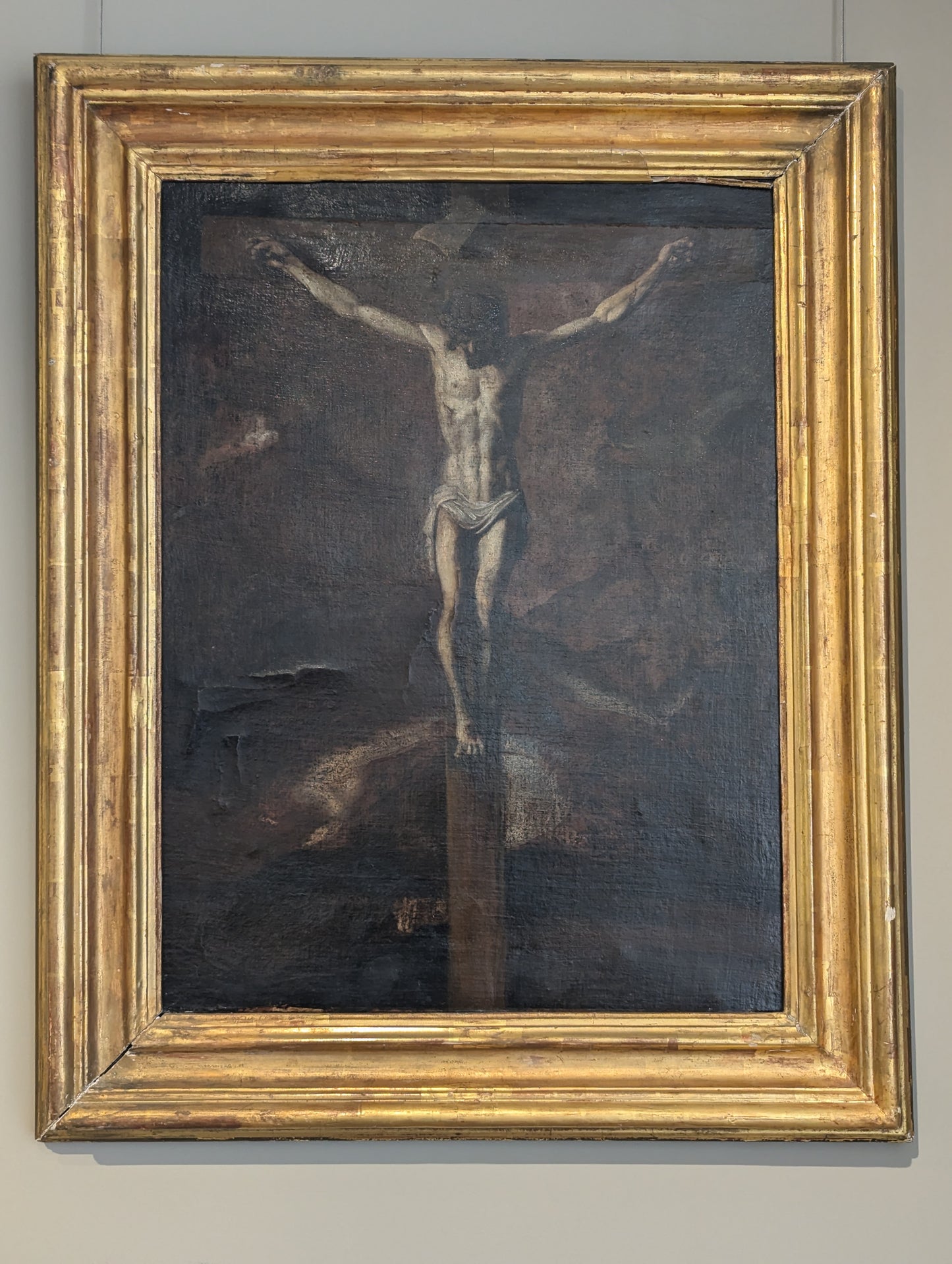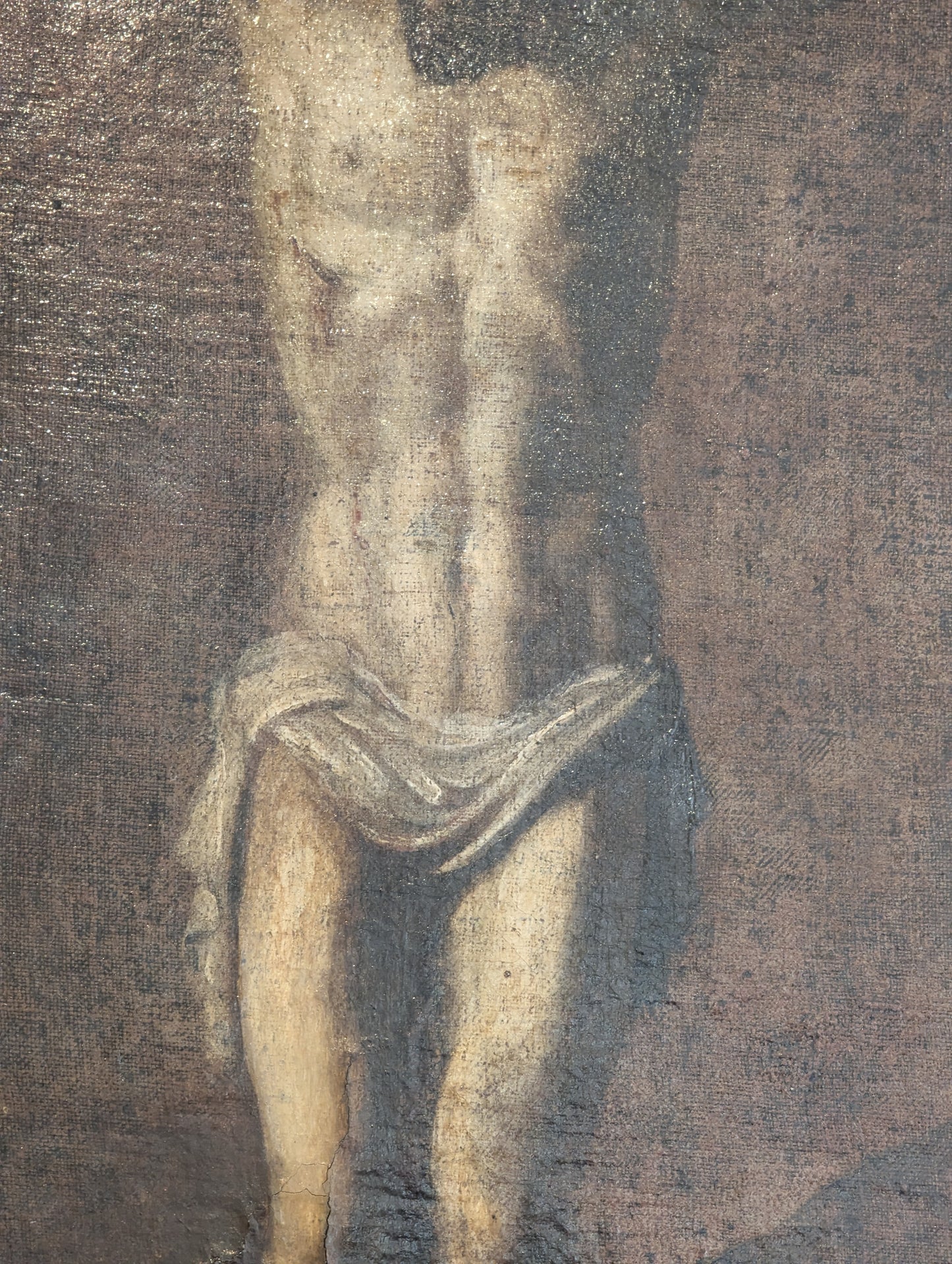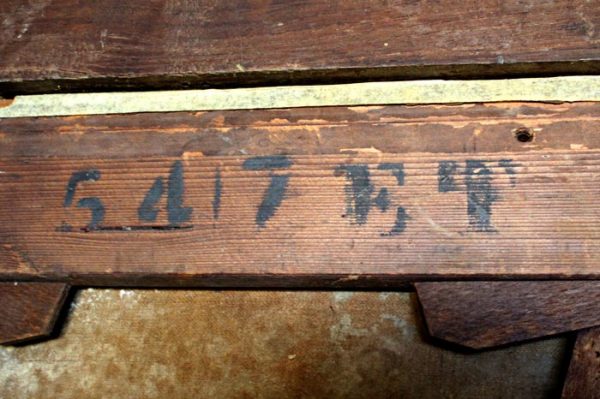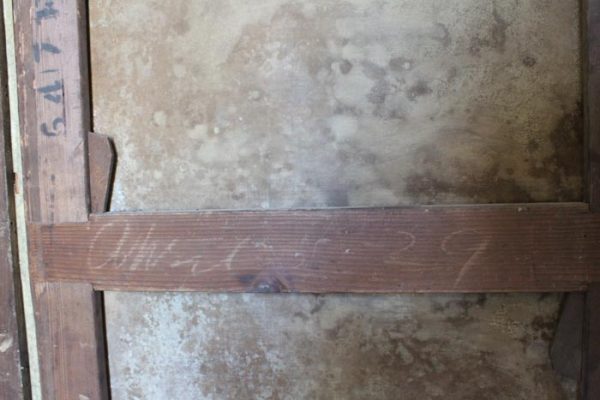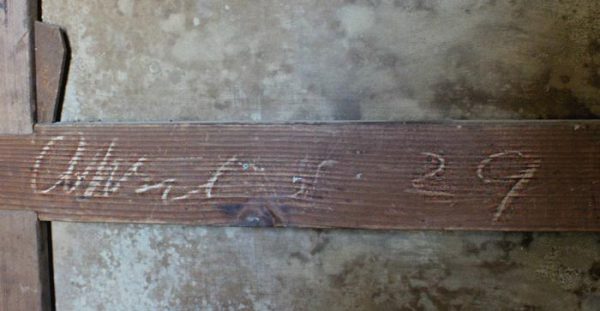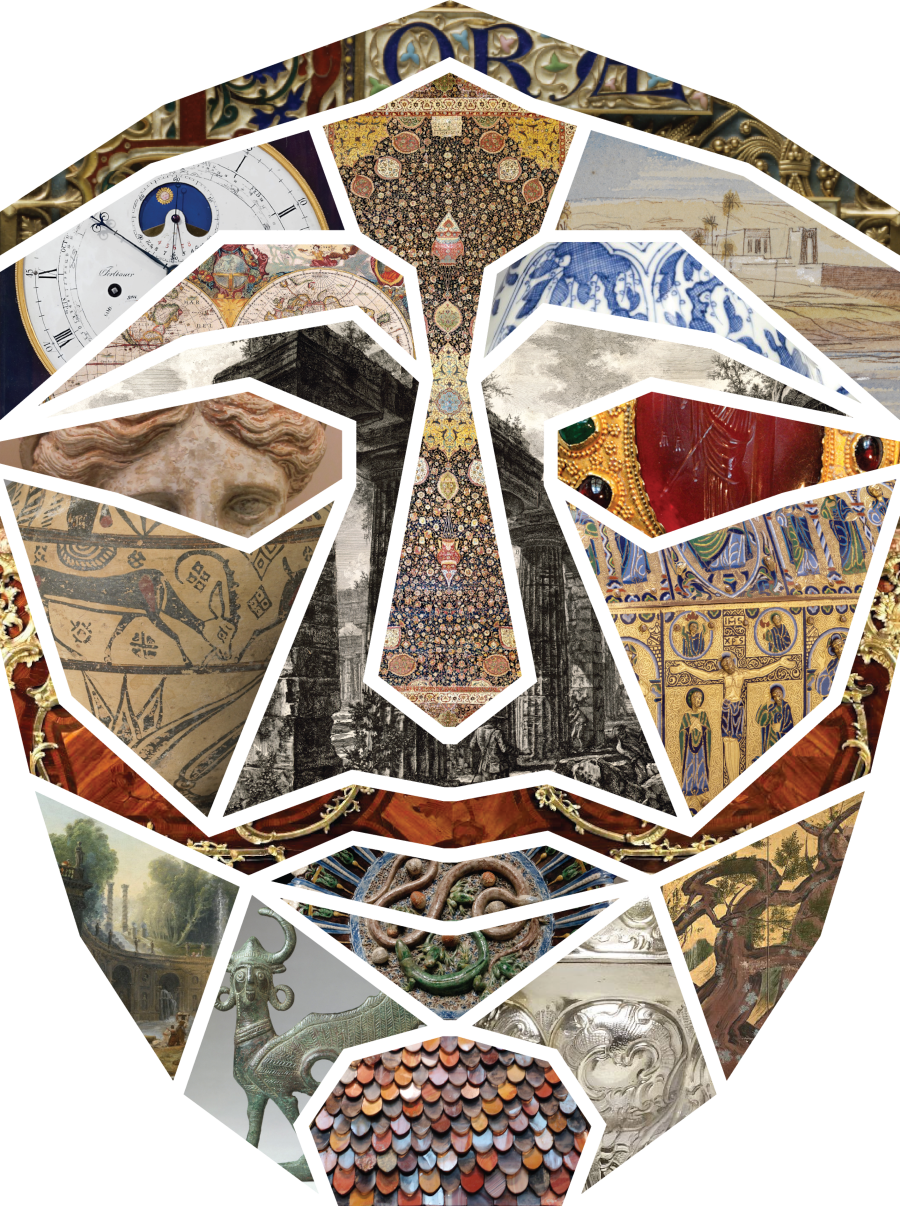My Store
The Crucifixion Southern Italian School c.1650 - Baroque Oil Painting Sacred Art
The Crucifixion Southern Italian School c.1650 - Baroque Oil Painting Sacred Art
Couldn't load pickup availability
The Crucifixion, Southern Italian School c.1650
A powerful and museum-quality Baroque oil painting depicting the Crucifixion of Christ, attributed to the Southern Italian School circa 1650. This emotionally charged work exemplifies the Counter-Reformation's emphasis on dramatic religious imagery designed to inspire devotion and communicate theological truths. The painting's accomplished execution, dramatic composition, and profound subject matter make it a significant example of 17th-century Italian sacred art and an exceptional acquisition for collectors of Baroque religious painting, Old Master works, or sacred art.
Southern Italian School - Artistic Context
The Southern Italian School encompasses painters working in Naples, Sicily, and other regions of southern Italy during the 16th-18th centuries. This artistic tradition was profoundly influenced by Caravaggio's revolutionary naturalism and dramatic use of light and shadow (chiaroscuro) following his time in Naples (1606-1607, 1609-1610). Southern Italian painters absorbed Caravaggio's innovations while maintaining distinctive regional characteristics. The school produced numerous accomplished artists who created powerful religious works for churches, monasteries, and private devotion. Paintings from this school are prized for their emotional intensity, dramatic lighting, and accomplished technique.
The Crucifixion - Central Christian Subject
The Crucifixion represents Christianity's central event - Christ's sacrificial death on the cross for humanity's redemption. This subject has inspired countless masterpieces throughout Christian art history, from Byzantine icons to Renaissance frescoes to Baroque altarpieces. Artists depicting the Crucifixion must balance theological accuracy, emotional power, and artistic excellence while conveying the event's profound spiritual significance. The subject's enduring importance ensures Crucifixion paintings remain among the most sought-after examples of Christian art.
Circa 1650 Dating - Counter-Reformation Context
The circa 1650 dating places this painting during the height of the Counter-Reformation, when the Catholic Church emphasized dramatic, emotionally engaging religious art to inspire devotion and counter Protestant criticism. The Council of Trent (1545-1563) had established guidelines for religious art emphasizing clarity, emotional accessibility, and theological correctness. Baroque artists responded by creating works of unprecedented dramatic power and emotional intensity. This Crucifixion exemplifies Counter-Reformation aesthetics - combining theological seriousness with artistic drama to create powerful devotional imagery.
Baroque Aesthetic - Dramatic Power
This painting demonstrates characteristic Baroque qualities: dramatic composition, strong contrasts of light and shadow (chiaroscuro), emotional intensity, and theatrical presentation. Baroque religious art sought to engage viewers emotionally and spiritually, creating immersive experiences that facilitated devotion and contemplation. The Crucifixion's dramatic treatment - whether emphasizing Christ's suffering, the darkness covering the earth, or the emotional responses of witnesses - exemplifies Baroque art's power to move viewers and communicate spiritual truths through visual means.
Technical Excellence - Oil on Canvas
Executed in oil on canvas, this painting demonstrates accomplished technique in figure painting, anatomical rendering, and atmospheric effects. The artist's handling of Christ's crucified body, the cross's construction, the landscape or architectural setting, and any additional figures (Mary, John, Mary Magdalene, etc.) shows complete mastery of oil painting technique. The work's execution quality, compositional sophistication, and emotional power indicate training in established artistic traditions and thorough understanding of both technical and spiritual requirements for sacred art.
Iconographic Elements
The painting likely includes traditional Crucifixion iconography: Christ on the cross with the INRI inscription, the skull of Adam at the cross's base (Golgotha means 'place of the skull'), mourning figures including the Virgin Mary and St. John the Evangelist, dramatic sky suggesting the darkness that covered the earth, and possibly additional elements like the two thieves, Roman soldiers, or Jerusalem in the background. These iconographic elements, developed over centuries of Christian art, communicate theological meanings while creating visually and emotionally powerful compositions.
Devotional and Liturgical Context
Crucifixion paintings served crucial devotional and liturgical functions in Catholic practice. They facilitated private meditation on Christ's Passion, provided focal points for prayer, decorated churches and chapels, and helped believers contemplate Christianity's central mystery. The painting's size, composition, and emotional character suggest it was created for either private devotion in a wealthy household or for a religious institution. This devotional context adds spiritual dimension to the work's artistic and historical significance.
Condition and Preservation
As a painting potentially 375 years old, condition assessment is crucial. The painting's current state, any restoration history, and structural integrity should be evaluated by conservation professionals. Many 17th-century Italian paintings have survived remarkably well due to quality materials and construction, though most show some age-related changes. Detailed condition reports available to serious collectors, documenting any restoration, overpainting, or structural issues. Appropriate conservation preserves value while inappropriate restoration can diminish it.
Attribution and Authentication
Attribution to the Southern Italian School circa 1650 suggests scholarly examination and comparison with documented works from this tradition. Comprehensive provenance research, technical analysis (including pigment analysis, canvas examination, and infrared reflectography), and expert authentication available to serious collectors. Understanding the painting's history, previous ownership, and scholarly documentation enhances both historical interest and market value.
Investment Value and Collectibility
Baroque religious paintings by the Southern Italian School represent solid investment opportunities. The combination of important subject matter (Crucifixion), circa 1650 dating, accomplished execution, and the enduring appeal of Baroque sacred art creates strong demand among collectors of Old Master paintings, religious art, Italian art, and Baroque specialists. As authentic period paintings become scarcer and appreciation for Baroque art remains strong, quality examples show consistent market performance.
Sacred Art Collecting
This painting appeals to collectors of sacred art who value works combining spiritual significance with artistic excellence. Sacred art collecting involves appreciation for both aesthetic qualities and spiritual/theological dimensions. Crucifixion paintings, representing Christianity's central event, hold special significance for collectors seeking works that facilitate devotion while demonstrating artistic mastery. The painting's Counter-Reformation context adds historical depth to its spiritual and aesthetic appeal.
Cultural and Historical Significance
This painting embodies Counter-Reformation Catholicism's emphasis on emotionally powerful religious art, the Southern Italian School's distinctive artistic traditions, and the Baroque era's dramatic aesthetic. It represents the intersection of theology, artistic skill, and devotional practice that characterized 17th-century Catholic culture. The work connects viewers to centuries of Christian artistic tradition and the ongoing power of visual art to communicate spiritual truths.
Display and Presentation
A painting of this subject and quality deserves placement where its spiritual significance and artistic merit can be appreciated. Ideal locations include private chapels, prayer rooms, formal living areas, libraries, or galleries. The Crucifixion's sacred subject makes it particularly suitable for ecclesiastical settings or homes where religious art enhances spiritual life. Professional lighting reveals the painting's dramatic chiaroscuro and technical accomplishment. Climate-controlled environment essential for long-term preservation.
Collecting Context
This painting appeals to collectors of Baroque art, Old Master paintings, Italian art, religious art, Counter-Reformation works, and those seeking spiritually significant art of museum quality. It would enhance private collections, ecclesiastical settings, institutional acquisitions, or serve as centerpiece in collections focused on sacred art or Baroque painting.
Available for viewing by appointment at Artemisia Fine Arts & Antiques Ltd, Malta's premier gallery for Old Master and sacred art. We provide expert consultation, authentication services, conservation coordination, provenance research, insurance valuation, and international shipping with specialized fine art handlers. This Southern Italian Baroque Crucifixion represents an exceptional acquisition opportunity for collectors of sacred art and Old Master paintings. Serious inquiries from qualified collectors and institutions welcome.
Share
